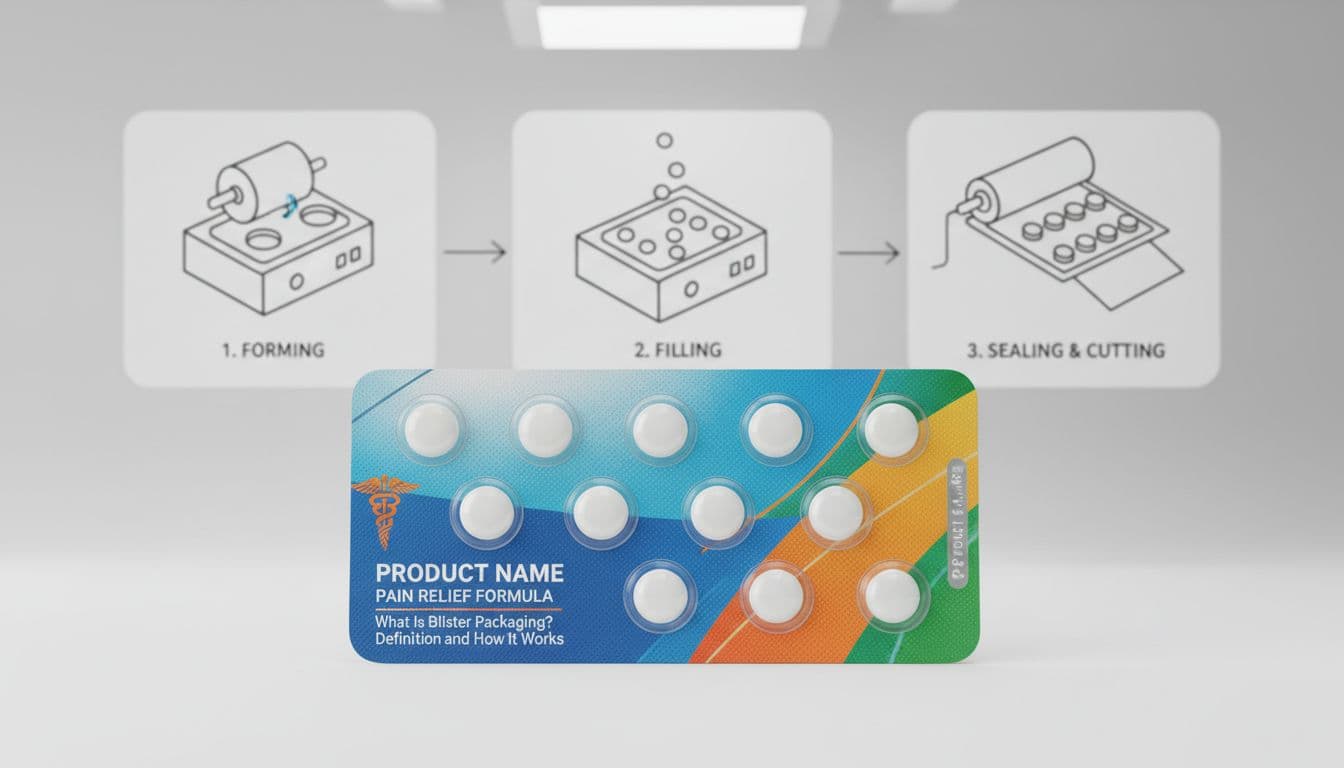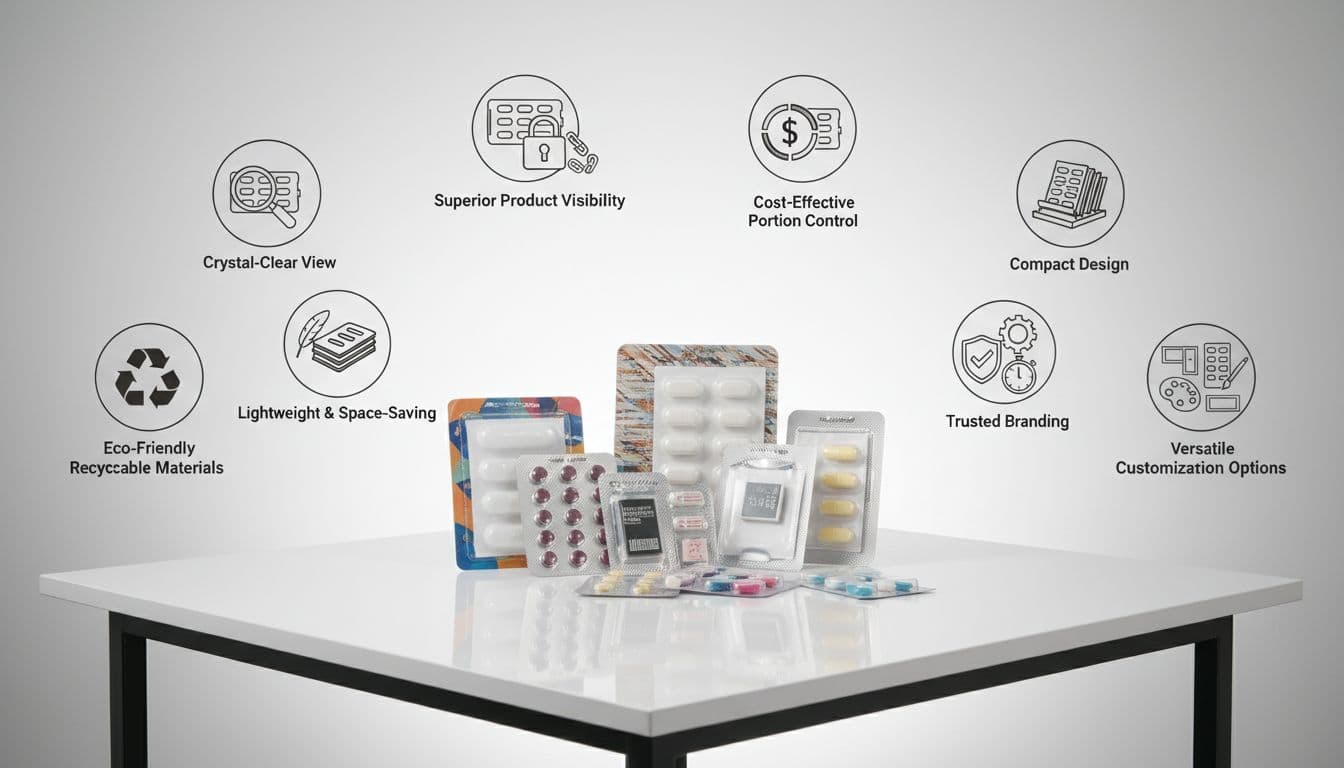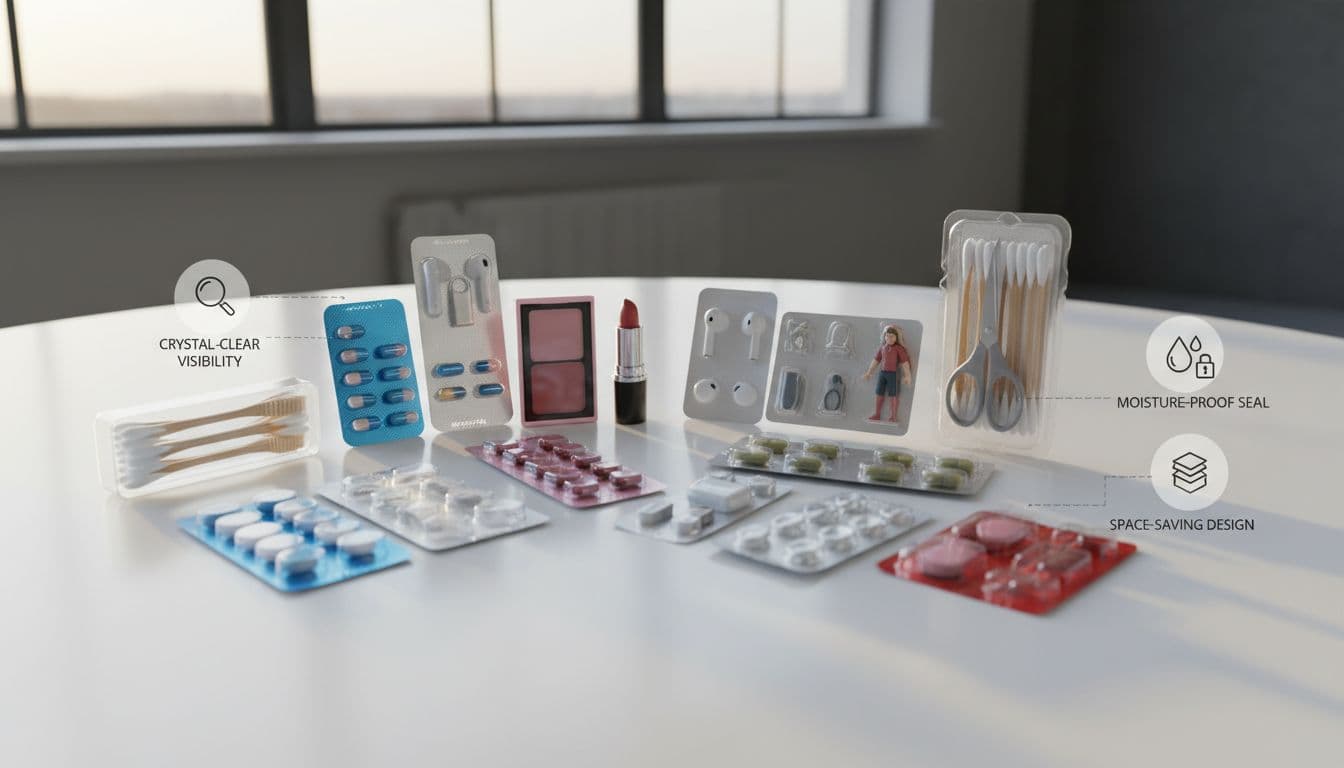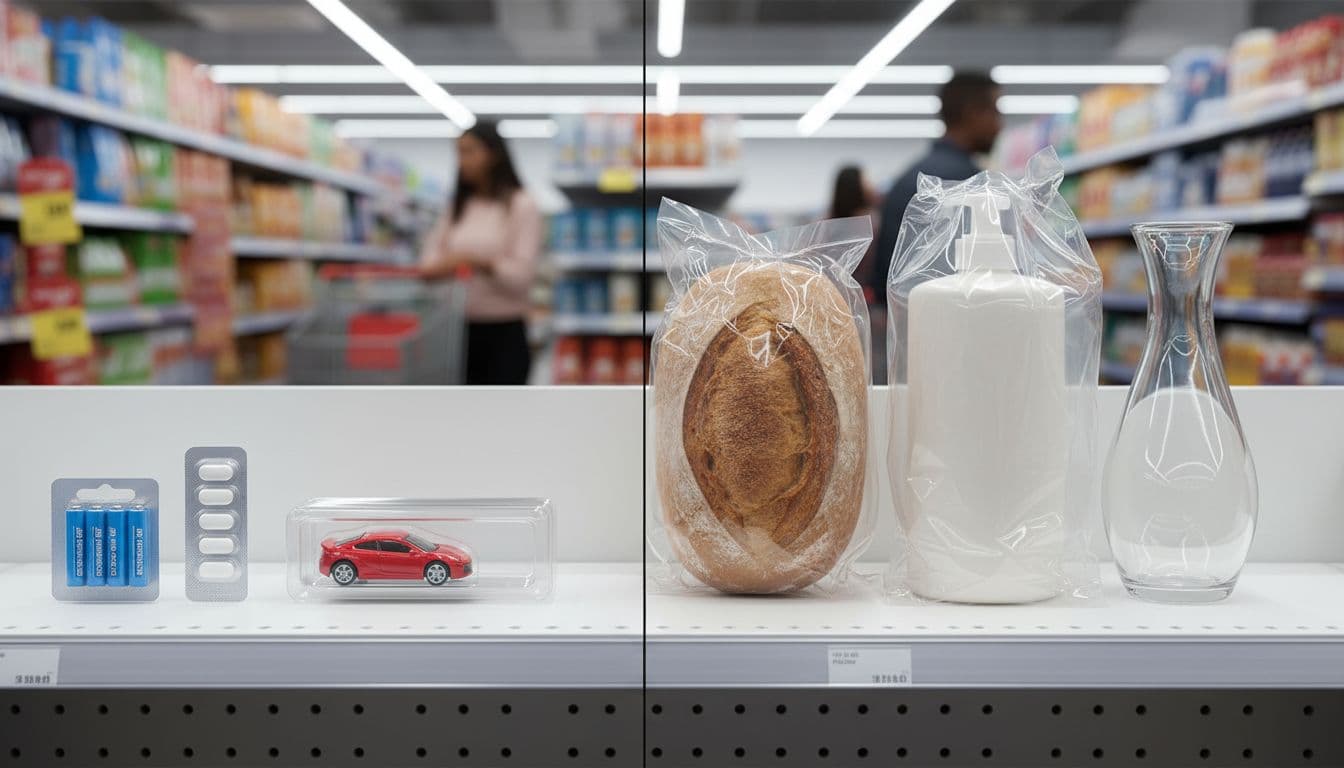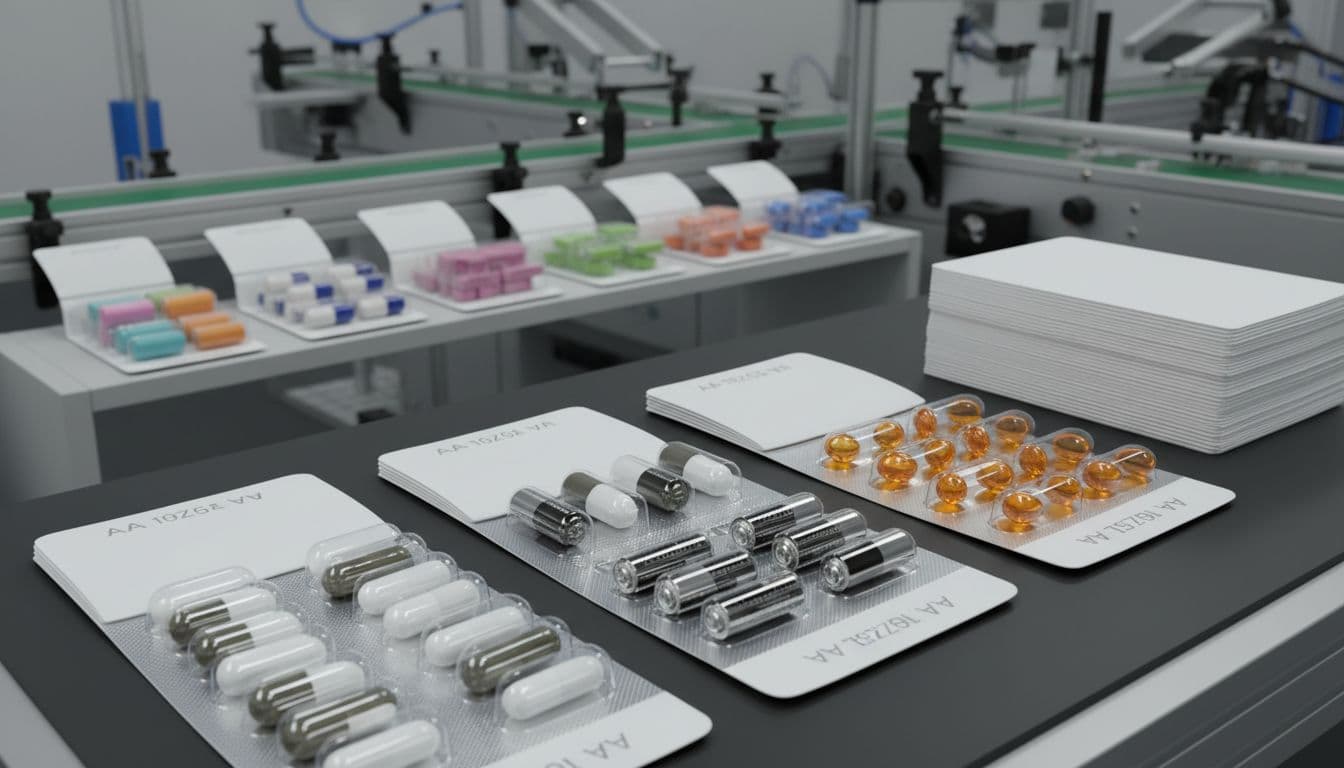
9 Benefits of Blister Packaging (Protection, Shelf Life, Cost)
Blister Packaging is a clear, sealed pack that holds one item or dose in its own pocket. It is popular in 2025 because it protects products, extends shelf life, and helps people use items the right way. You see it everywhere, from medicines and vitamins to hardware, cosmetics, and small electronics. Brands also like how it shows the product while keeping it clean and safe.
In this guide, you will learn the 9 benefits that matter most. We cover Blister Packaging advantages like strong protection, longer shelf life, and accurate dosing. You will also see how it boosts product visibility, improves safety and tamper evidence, cuts costs, and lifts retail display impact. We will finish with sustainability gains and how new materials make packs easier to recycle.
If you are weighing bottles or boxes against blisters, this will make the choice simple. You will get clear reasons backed by everyday use cases, from pharmacy shelves to checkout racks. Want help turning these benefits into a real package for your product? Explore MSL’s blister packaging services for options that fit your size, speed, and budget.
What Is Blister Packaging? Simple Definition and How It Works
Blister Packaging is a clear, molded pocket that holds and protects an item or dose. Think of a pill pack with push-through foil or a set of batteries hanging on a peg. A sheet of plastic is heated and shaped into a cavity, the product is placed inside, then a backing is sealed on to close it. That seal locks in freshness, blocks moisture and air, and keeps the product visible. Blister packs can be single-use or designed with multiple compartments for unit-dose control.
For brands that want speed, clean display, and dependable protection, a thermoformed blister often checks all the boxes. If you need help turning specs into production, explore MSL’s custom blister packaging and copacking for practical options.
Key parts you can see: blister, cavity, backing, and seal
- Blister or cavity: The clear, shaped pocket formed by heat and pressure. It holds the product in place and shows it off on the shelf.
- Backing card: A printed paperboard card that sits behind the blister. It carries branding, directions, and a punch hole for hanging.
- Foil lidding: A thin aluminum layer used on many pill packs. It adds a strong barrier against moisture, oxygen, and light.
- Seal: The heat seal or pressure seal that bonds blister to backing. A proper seal protects the item and prevents tampering.
How it works in practice: plastic is thermoformed into shape, the product is placed, then the card or foil is sealed to close the pack.
Common materials and why they matter
- PVC: Clear and cost-effective. Good formability and holds detail well.
- PET: Clear with better toughness than PVC. Widely accepted in recycling streams.
- RPET: PET with post-consumer content. Cuts virgin plastic use while staying clear and strong.
- Foil: Best-in-class barrier for pills and moisture-sensitive items. Often paired with unit-dose packs.
Quick tip: PET and RPET support recyclability in many regions, especially when used with compatible backings.
Where you see it in everyday life
- Pharma: Unit-dose blisters for tablets help dosing and child resistance.
- Nutraceuticals: Vitamins stay fresh with foil lidding and clear visibility.
- Hardware: Screws, bits, and batteries stay organized and easy to peg.
- Beauty: Razors and cosmetics look clean, sealed, and ready to compare.
- Snacks or gum: Multi-compartment blisters keep pieces fresh and portable.
These categories prefer blister packs for easy display, solid protection, and simple, tamper-evident use.
The 9 Benefits of Blister Packaging You Should Know
Blister Packaging earns its place on retail shelves for simple, practical reasons. It protects what is inside, keeps items fresh, and helps people use products the right way. Here are nine benefits that make it a smart choice across pharma, nutraceuticals, beauty, hardware, and small electronics.
Sealed protection from moisture, oxygen, and contamination
A sealed blister creates a tight barrier that blocks dust, bacteria, humidity, and air. The product sits in a formed cavity, then a heat-sealed lidding film or card closes the pack. Good materials and a proper seal limit moisture and oxygen transfer.
- Why it matters: Less moisture and oxygen means fewer spoilage risks and less corrosion.
- Example: Tablets sealed under foil arrive dry and stable, even in humid regions. See how this supports blister pack protection for tablets in modern lines: contract packaging strategies 2025.
Longer shelf life for sensitive products
Each cavity keeps its item isolated from the air. That slows oxidation and breakdown over time. With the right lidding, light and vapor also stay out, which helps actives hold strength.
- Why it matters: More time on shelf, fewer complaints about stale or weak product.
- Example: Vitamin C softgels hold potency longer in sealed blisters than in a bottle opened daily.
Accurate dosing and easier medication adherence
Unit-dose packs make dosing simple. One cavity equals one pill or one strip. You can see what you took today because empty cavities are clear proof.
- Why it matters: Fewer dosing mistakes and better daily habits for patients and caregivers.
- Example: A morning-evening pill card helps a caregiver confirm the 8 a.m. dose without guesswork.
Clear product visibility builds buyer confidence
The clear front lets shoppers inspect the item before buying. They can check size, color, and contents at a glance. This removes doubt and reduces returns.
- Why it matters: When buyers see the real product, they decide faster and feel more secure.
- Example: A blister with two AAA batteries shows both cells present and free from leaks or dents.
Freshness on demand, one unit at a time
You open only the cavity you need, while the rest stay sealed. That means less exposure to air and moisture after first use.
- Why it matters: Better freshness across the entire pack, not just day one.
- Example: Gum in a card stays crisp because you pop one piece and the rest remain sealed.
Safer packs with child-resistant and senior-friendly options
Designs can use a two-step action that slows kids but stays simple for adults. Push-through with added peel steps or special angles can raise safety without heavy force.
- Why it matters: More safety at home and fewer accidental openings.
- Example: A pain reliever blister that needs a peel, then a push, deters kids but is doable for adults with simple instructions.
Cost-effective to produce at scale
Once the tooling is set, per-unit cost drops as volume rises. Blister Packaging often uses less material than bulky clamshells. High-speed packing lines form, fill, and seal with tight control.
- Why it matters: Lower cost per unit, consistent quality, and fewer manual steps.
- Example: A run of 100,000 cosmetics testers sees a sharp cost drop after initial setup.
Retail-ready, easy to display, store, and ship
Blisters are built for retail speed. Hang holes fit peg displays. Flat cards stack tight in cases with good cube efficiency. The rigid cavity holds the product in place, which cuts damage in transit.
- Why it matters: Faster stocking, better presentation, and fewer crushed items.
- Example: A 10-pack of razor cartridges hangs face-out with clear branding and no loose parts. For display tips that lift sales, review MSL’s shelf-ready packaging solutions: https://msl-indy.com/shelf-ready-packaging/.
Custom design and more sustainable choices
Backer cards are print-ready for brand, instructions, and warnings. Teams can choose recyclable plastics like PET or RPET, foil-light designs, and right-sized cavities to cut waste. Smart die-cuts and efficient card sizes also trim material and freight.
- Why it matters: Strong branding with less waste and a lower footprint.
- Example: An herb kit uses RPET and a slim card to reduce plastic and paper while staying clear and sturdy. If you want a broader view of packaging tiers and material choices, explore primary blister packaging benefits within MSL’s guide: https://msl-indy.com/types-of-contract-packaging-services/
- Quick checklist for better sustainability:
- Right-size the cavity: No empty space, tighter packs.
- Choose PET or RPET: More recycling access than PVC in many regions.
- Reduce foil: Use only where barrier is needed.
- Optimize card stock: Fit more ups per sheet to cut waste.
Blister Packaging does a lot with a small footprint. It protects, extends shelf life, and speeds retail while keeping costs in check. When done right, it also supports clear dosing, safer use at home, and a cleaner, more organized shelf.
Materials and Formats That Unlock These Benefits
Get more out of Blister Packaging by pairing the right film and lidding with your product. Your choices affect protection, shelf life, and how easy the pack is to open. Use this quick guide to match materials to the outcome you want.
Thermoformed vs. cold-formed blisters
Thermoforming shapes clear plastics like PVC, PET, or RPET into smooth cavities. You get strong visibility, precise fit, and efficient forming at scale. It suits hardware, beauty, gum, and many nutraceuticals that need display plus moderate barrier.
Cold-form foil blisters use aluminum shaped without heat. The result is an opaque pocket with very high moisture, oxygen, and light barrier. This format shines in pharma and highly sensitive actives.
- Pick thermoformed when you need product visibility, faster cycles, and good branding space on a card.
- Pick cold-formed when maximum barrier and long stability matter more than seeing the product.
For added context on preventing damage in transit and storage, review the protective packaging benefits for product safety.
Foil, paperboard, or Tyvek backing, and what each does
Your lidding drives seal strength, breathability, print area, and cost. Use this snapshot to choose smart.
| Backing Type | Sealing Strength | Printability | Breathability | Cost Tier |
|---|---|---|---|---|
| Foil lidding | High | Moderate | None | Medium–High |
| Paperboard | Medium | High | Low | Low–Medium |
| Tyvek | Medium–High | Medium | High | High |
- Foil: Best barrier. Great for tablets, powders, and moisture-sensitive items with longer shelf life goals.
- Paperboard: Big print area and retail presence. Works for hardware, beauty, and snacks with moderate barrier needs.
- Tyvek: Breathable and tough. Ideal for sterilized medical devices and products that must vent or gas out.
Simple rule: match higher barrier to longer shelf life and humidity risk. Use paperboard when display and cost take priority.
Barrier basics in plain language
Oxygen and moisture are the two big spoilers. Oxygen can dull flavors and weaken actives. Moisture swells tablets, clumps powders, and softens snacks.
- Pills that hate humidity do best under foil or high-barrier laminates.
- Snacks that stale in air need oxygen barrier, plus tight seals.
- Vitamins sensitive to light benefit from opaque or metallized structures.
Think of the cavity like a raincoat and the lidding like the zipper. Both must hold tight to keep the product stable.
Child-resistant features and easy-open design
Safety and access can live together with smart features. Patterns, perforations, and layered materials fine-tune how a pack opens.
- Two-step actions: Peel, then push. Slows kids, stays clear for adults.
- Perforation patterns: Guide the tear so users open the right spot.
- Layered lidding: Combine peelable top layers with push-through strength below.
- Texture cues: Raised dots or arrows help seniors find the open point.
Balance safety and usability with small pilots. Always test with real users, including seniors and caregivers, before you scale.
When Blister Packaging Is the Best Choice, and When It Is Not
Blister Packaging shines when you need product visibility, unit protection, and simple retail display. It is not right for every product though. Use this guide to spot strong fits, flag weak ones, and match the pack to your budget and volume.
Best-fit products and industries
Here are common winners where Blister Packaging performs well.
- Tablets and capsules: Unit-dose control, strong barrier with foil, and easy adherence.
- Small hardware and fasteners: Screws, anchors, and bits stay sorted, visible, and peg-ready.
- Grooming tools: Razors, tweezers, and nail clippers display cleanly and resist tampering.
- Batteries and small electronics: Cavity holds shape, helps theft deterrence, and cuts damage.
- Cosmetics and beauty accessories: Single items like lip balms or applicators look clean and premium.
- Nutraceutical samples and gum: One-at-a-time access keeps the rest fresh.
- Medical devices and disposables: Tips, test strips, and swabs stay sterile with the right lidding.
Short rule: small to medium items that benefit from visibility, unit control, and a tight seal usually fit well.
Common trade-offs and pitfalls
Even a great pack has limits. Watch for these issues and simple fixes.
- Trapped air with soft goods: Fabric or foam can look puffy. Use vent holes or a thinner cavity to let air escape.
- Shelf glare: High-gloss plastic can reflect store lights. Choose a lower-gloss film or adjust artwork contrast.
- Very heavy parts: Weight can stress the seal. Use thicker gauge plastic, a trap blister, or add hang-tab support.
- Oily or greasy items: Oil can weaken the seal and stain cards. Add an inner pouch or oil-resistant coating on the card.
- Sharp edges: Points can pierce film. Add corner guards, thicker plastic, or a small insert to shield tips.
- Products needing 360-degree access: Tools used and returned to pack do not suit sealed blisters. Consider a clamshell or a box with a tray.
How volume and budget affect your choice
Tooling and setup drive early cost. Once you spread those over more units, your per-piece price drops. High volumes reward custom tooling, tighter fits, and faster lines. Low volumes often do better with stock blisters, standard card sizes, and minimal changeovers.
- For pilots or seasonal runs, use stock tooling and a face-seal card to avoid big startup costs.
- For steady programs, invest in custom cavities and automation to cut long-term unit cost.
- For mixed SKUs, standardize card footprints and film gauges to keep line speeds high.
If you want fast ballpark thinking for your run size and format, use this guide to Get a Custom Quote for Blister Packaging. A few specs, like product size, count per card, and target shelf life, will point you to the right path.
How to Plan a Blister Packaging Project and Pick the Right Partner
Turn a good idea into retail-ready Blister Packaging with a clear plan. A simple path keeps costs in check, protects your timeline, and reduces surprises. Use the steps below to move from concept to shelf with confidence.
From concept to tooling to first run
Start with a short brief, then move fast into design and trials.
- Brief and specs (1 to 3 days): Define product size, count per card, target shelf life, child resistance needs, and retail display. Share any artwork, barcodes, and dosing or warning text.
- Dieline and 3D prototype (3 to 7 days): Get a dieline for artwork and a 3D mockup to confirm fit. Ask for a small set of printed samples to check messages and scannability.
- Tooling (1 to 2 weeks): Approve the design, then your partner cuts forming tools and heat-seal plates. Custom tools add precision and speed once you scale.
- Test run or pilot (3 to 5 days): Run a few hundred to dial in forming, loading, and sealing. Confirm cavity fit, seal temps, and line speed.
- Full production (1 to 2 weeks, volume dependent): Lock in QA settings, print cards, form and fill, then pack for shipment.
Tip: Build time for reviews. A quick sign-off at each step keeps momentum and prevents rework.
Quality checks that protect your brand
Tight seals, strong packs, and stable product protect your reputation.
- Seal integrity checks: Use peel tests or burst tests to confirm seals hold, without tearing the card face. Spot-check on every shift.
- Drop tests: Drop a finished pack from waist height on all sides. Look for cracked blisters, lifted seals, or scuffed cards.
- Aging studies: Store samples at room and elevated conditions for days or weeks. Watch for loss of potency, color change, curl, or seal creep.
Run a small pilot before a big PO. Problems are cheaper to fix in a 500-unit test than after 50,000.
Compliance and labeling made easy
Keep labels clear, accurate, and safe without turning it into a science project.
- Child-resistant options: Use two-step actions like peel then push, or added strength lidding. Test with real users.
- Clear dosing info: One cavity equals one dose. Add simple icons for morning or evening if needed.
- Lot codes and expiry: Print readable codes and dates on every card. It supports recalls and warehouse control.
- Tamper-evident cues: Use visible seals, perforations, or a peel strip so buyers can see if the pack was opened.
For deeper guidance on labeling, coding, and traceability, review this resource: Essential Labelling and Serialization in Packaging.
Questions to ask a packaging partner
A short checklist helps you compare options and set expectations.
- What materials do you run, like PET, RPET, PVC, foil, or Tyvek?
- Do you offer stock tooling, custom tooling, or both?
- What are typical lead times for design, tooling, and first production?
- Can you print cards in-house, with color control and proofing?
- What sustainability choices exist, such as RPET and right-sized cards?
- How do you handle QA, coding, and serialization?
- What after-sales support is included, like rework, storage, or replenishment runs?
Strong answers here point to a smoother launch, a tighter seal, and a pack that sells.
Conclusion
Nine clear wins stand out. You get sealed protection, longer shelf life, and unit-dose control. Visibility stays high, freshness holds after first use, and safety improves for homes with kids. Costs drop at scale, retail display is simple, and custom design brings smart sustainability.
The key is fit. Match barrier to moisture and oxygen risk, choose user-friendly lidding, and right-size the cavity. A short brief with product size, target shelf life, and opening method speeds decisions. Aim for material and design alignment that protects, sells, and supports your brand.
Ready for next steps? Assess your product needs, list must-have features, and draft a one-page brief. Share it with your packaging partner to scope tooling, timelines, and tests. With the right choices, Blister Packaging can lift protection, shelf life, safety, and retail impact.

